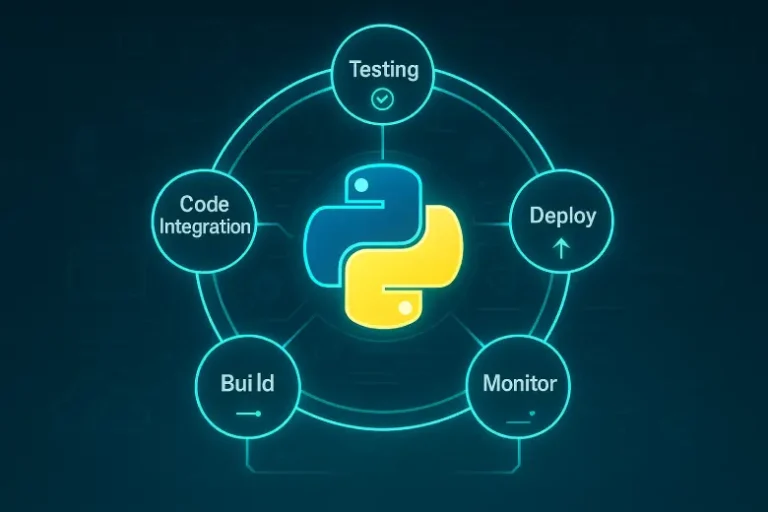“7 Powerful Tips for Mastering Python Input and Output in Any Online Compiler Environment

Understand the inner workings of Python input and output with a simple online Python compiler input. This guide walks you through syntax, tips, examples, and debugging.
As with any language, as humans lots of things to converse and share information with each other , and systems need interaction too. In Python, this interaction is managed mainly by means of Python input and output (I/O). Whether a program is a simple calculator, a quiz application, or a game with complex logic, it is important to understand how Python receives user commands and displays results as to make the program responsive.
Although conventional IDEs provide this useful feature via the terminal, modern compilers now allow you to execute Python input and output code online, and support input() and print() functions without restrictions.
Compilers help run all the time with this step-by-step Python I/O guide that includes algorithms, basic commands, formatting, and even exercises during the session in the online Python compiler input front-end environment of the browser.

Why Practice Python I/O Using an Online Python Compiler?
One major benefit of scripting in an online compiler is the instant feedback loop, an essential element of the learning process. When learning the ability to receive Python input and output or display a message to a user, instant feedback goes a long way towards cementing the concept.
By utilizing the cloud-based tools with these features, you can:
- Sidestep installation and configuration complications.
- Test small snippets of (I/O) Python print input examples from any device.
- Debug without file dependencies.
- Execute logic-based tasks on a portable device
The processes with cloud-based systems permit you to learn Python input and output commands in the most straightforward method: effortless writing and command execution.
Using print() in Python
The print command is used in Python to visualize the output of a specific program. In this case, it would be sent to the console. As it is the most popular command used in almost any beginner-level script, its frequent media outputs can be described as results from a beginner’s success.
Here it is Python print input example: print("Hello, world!")
As easily demonstrated above, code can be written as a statement and Python does not alter the text. Furthermore, one can output numbers, variables, or even aggregate expressions such as functions
x = 5
y = 10
print("The sum is:", x + y)
Answering back with:
The sum is: 15.
If one accesses a browser-based online Python compiler input, the results will be displayed immediately and ensure immediately next to the input area, easing verification and experimentation exploration of different outputs. Using f-strings improves the formatting of text as output and makes it easier to update. Its usefulness shines when maintaining text messages in interactive scripts
Taking Multi Inputs
In certain situations, a user might be allowed to enter several values at a time. Python print input example by using split() to accomplish this.
a, b = input("Enter two numbers separated by space: ").split()
a = int(a)
b = int(b)
print("Sum:", a + b) As in the previous example, this method works great for small computations, such as when one needs to code in Python input and output (I/O), where many variables are handled at once.
Accepting Values as Float
For business, scientific, or mathematical reasons, you sometimes need to take input as a decimal number.
price = float(input("Enter the product price: "))
quantity = int(input("Enter quantity: "))
total = price * quantity
print(f"Total amount: ${total}")This works perfectly in an online Python compiler input, as one can test and simulate sophisticated billing systems or calculators that do not require local files to be used.
Output Arranging and Formatting
You can use various formatting techniques to improve your output look such as width, alignment, and decimal precision.
Aligning of Strings
print(f"{'Item':<10} {'Price':>10}")
print(f"{'Apple':<10} {'$1.25':>10}")
Cutting of Decimal Places
pi = 3.14159265
print(f"Pi rounded to two decimals: {pi:.2f}")Handling User Input That Requires Input Validation- Try and Except
Based on previous statements, the user is not always right so to lessen the chances of a runtime error occurring, use a try-except block.
Consider the following scenario:
age = int(input("Enter your age: "))
print("You are", age, "years old.")
And suppose we have this piece of code to catch errors:
except ValueError:
print("Please enter a valid number.") This is adding user-friendly messages for computer-only error. For me, if I’m debugging a program between clients online. They get instant feedback from the compiler while tracing the logs. That said, responding to user input errors in user-friendly ways is far more useful in solving real-world business problems.
Designing a Simple Application using Input and Output methods
Moving on, let’s use everything we’ve covered in this lesson by designing a small text conversation application: Python print input example in Temperature Converter.
def convert_temp():
temp = float(input("Enter temperature in Celsius: "))
fahrenheit = (temp * 9/5) + 32
print(f"{temp}°C is {fahrenheit:.1f}°F")
convert_temp()Use any online py application, execute this app and substitute the stated values for more expected to get out different results. Online Python compiler input strengthens many things – inputs, typecasting, adding parameters, and functions.
Automating the Processing of Multiple Values Using Loops
You can use this algorithm and pattern to repeat asking for the input:
while True:
text = input("Type something (or 'exit' to quit): ")
if text.lower() == "exit":
break
print("You typed:", text) This demonstrates how the flow can be controlled through logical steps. Doing this in an online Python compiler input allows users see how loops with conditions are processed together in real-time.
Conclusion
Learning Python input and output is important for building interactive applications — from basic calculators to sophisticated data pipelines. With online Python compilers, users get the advantage of receiving undeclared feedback during testing, which they can use to adjust their logic errors or examine user prompts, thereby accomplishing tests and checking logic.
Practicing Python print input examples with `input()` and `print()` strengthens your understanding of the foundational logic behind all applications. So go ahead, fire up a compiler and start experimenting. With each `input` you provide, you’re one step closer to mastering Python.






